#piazza irmscher
Explore tagged Tumblr posts
Text



1987 Isuzu Piazza Irmscher
My tumblr-blogs:
www.tumblr.com/germancarssince1946 & www.tumblr.com/frenchcarssince1946 & www.tumblr.com/englishcarssince1946 & www.tumblr.com/italiancarssince1946 & www.tumblr.com/japanesecarssince1947 & www.tumblr.com/uscarssince1935
11 notes
·
View notes
Text
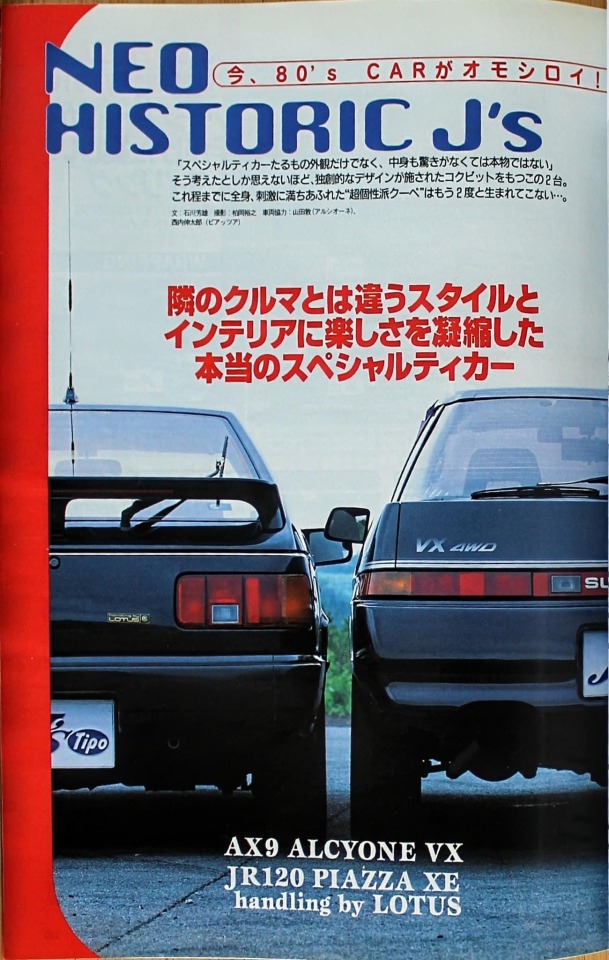
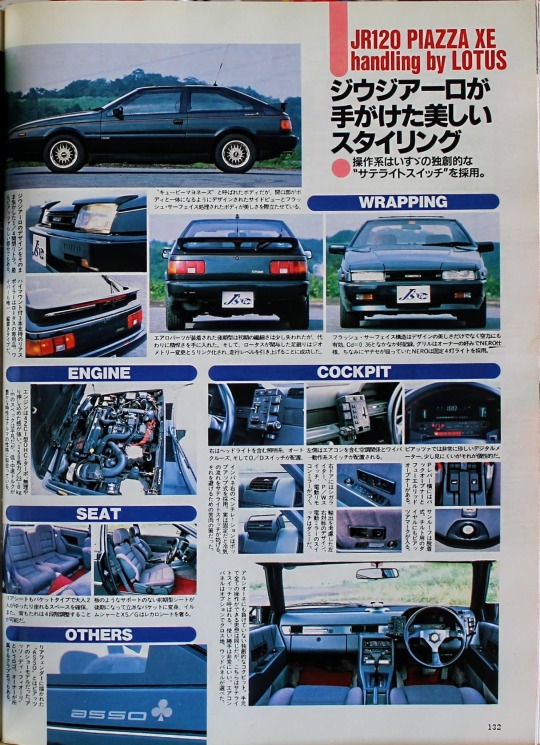
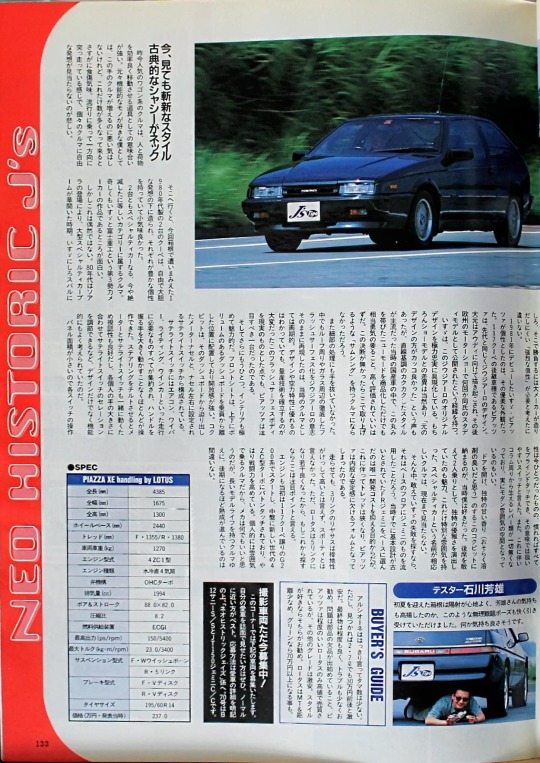
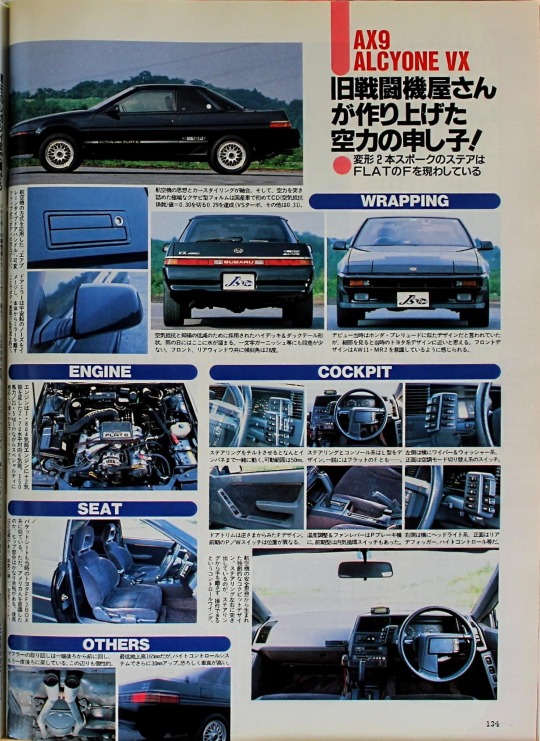
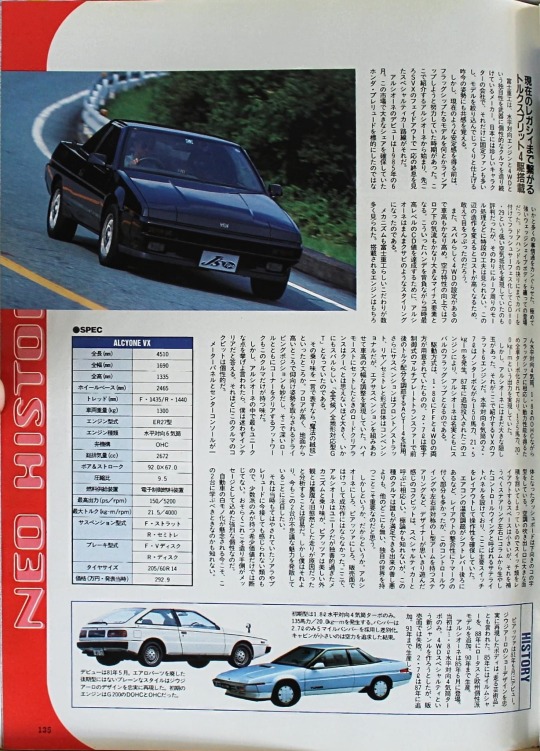
Now, 80's CAR is interesting! NEO HISTORIC J's
"A specialty car is not a real thing without surprises on the inside as well as on the outside." A “super-unique couve” full of stimulation from the whole body like this will never be born again.
Text: Yoshio Ishikawa Photo: Hiroyuki Kashiwaoka Vehicle cooperation: Atsushi Yamada (Alcyone), Shintaro Nishiuchi (Piazza)
A true specialty car with a style and interior that is different from its neighbors and packed with fun
AX9 ALCYONE VX
JR120 PIAZZA XE handling by LOTUS
PIAZZA
Beautiful styling by Giugiaro
The operation system adopts Isuzu's original "satellite switch".
WRAPPING
The body was called “Kewpie mayonnaise”, but the opening is a box.
Side view and flat design designed to become one with The body with a su-surface treatment accentuates its beauty.
Based on Giugiaro's design
1/4 opening and closing headlight covers which I made good use of.
Three support risers with high mount brake light
The spoiler is exclusive to Lotus.
is also a part of Piazza.
The late model with aero parts lost a little of the delicacy of the early days, but instead gained a fearlessness. And the suspension that Lotus was involved in changed the geometry and made it 5 links, and succeeded in raising the driving level.
The flash surface structure is effective not only for the beauty of the design but also for the aerodynamics. Cd=0.36 is a good record. The grill is NERO specification according to the owner's preference. By the way, Yanase's NERO uses fixed 4 lights.
ENGINE
The engine is a 4ZCI type OHC turbo. I have a strong feeling that I was forced into it. The specs of 150 horsepower/20 kg-m are mediocre, but the characteristics of rich low and medium speed torque match the character of the car
COCKPIT
On the left side are the switches for air-conditioning, including the air-conditioner, and wiper-operating system switches.
On the right is the lighting system including headlights, auto cruise, and O/D switch.
A digital meter, which is very rare in Piazza. It's a little hard to see, but that's what makes it unique.
The ventilation on the right side of the instrument panel uses a pop-up type. In fact, if it is fixed, the satellite switch will block the flow of cool air. It was a desperate measure to avoid it.
The right door has a cigarette lighter, P/W switch, and electric remote control mirror.
Symmetrical design considering export. The electric mirror switch is a dummy.
There is a back opener and a fuel lid opener next to the P lever.
The sunroof is removable. The dial for tilting also has the Piazza mark.
An original cockpit that is as good as Alcyone.
The idea that all operations can be performed at hand with is the same, but this is a satellite
called a switch. Very easy to use. air conditioner
Optional cloth and wood panels were available for the panel.
SEAT
The rear seat is also a bucket type and can accommodate 2 adults.
Make sure there is enough space for people to sit comfortably.
In addition, the backrest can be adjusted in 4 stages.
The early model seat without board-like support transforms into a splendid bucket in the late model. Irmscher and XS/G can have optional RECARO seats.
OTHERS
"ASSO" painted on the rear fender was Piazza's show model. The logo "Aso di Fiori" is also the name of the club to which the owner belongs.
A novel style even now
Classic chassis is the bottleneck
Wagon-type cars, which are popular these days, have a strong meaning as a tool for efficiently moving people and goods. As someone who likes functional things, I don't mind the increase in the number of cars like this, but when the number of cars increases this much, it's just a bit of a disappointment. It's sad that I can't find any free ideas for individual cars, as it seems that they are riding the trend and rushing in one direction.
When I went there, I saw two coupes made in the 1980s that I encountered in Hakone this time. They were built based on free and bold ideas, and each had a rich personality, which was refreshing.
Both cars belong to the almost extinct category of specialty cars. Interestingly enough, this is the work of the third power manufacturer, Isuzu and Fuji Heavy Industries.
But this is no coincidence. The 1980s was a time when a large-scale specialty car boom blossomed with the introduction of the Soarer. Isuzu or Subaru In order to compete there, they must have thought that a “strong individuality” that is difficult for large manufacturers to create was necessary.
The Isuzu Piazza, which debuted in 1981, was characterized by its elegant appearance. The Piazza, the successor to the 117 Coupe, was designed by Giugiaro, just like its predecessor. Originally drawn for Audi, it has been shown several times as his study model at European motor shows.
Isuzu has embodied this Giugiaro original design as faithfully as possible. Of course, there were some differences from the show model, and some people said that the original design was cooler. It takes a lot of courage just to commercialize the tinged new mode. It should be appreciated. Without this decision, the car wouldn't have had the "something" we're talking about here.
In addition, he did not cut corners in the processing of details. Above all, it was epoch-making for a car at that time that the roof and glass areas were completely recreated exactly as Giugiaro intended. The Piazza was a car worthy of attention for realizing the flush surface body, which had been difficult to establish for mass production, even though we knew that it had excellent design and aerodynamic characteristics.
And one more thing, the interior is extremely attractive. The front seats have a voluminous dashboard placed in a position away from the occupants, giving a strong sense of openness. The cockpit consists of a meter nacelle protruding from the dashboard and satellite switches set to the left and right of the nacelle.
The satellite switch has everything necessary for driving such as air conditioner, wiper 1, lighting, turn signal, etc., and most of them can be operated without moving the steering wheel significantly. When the steering wheel is tilted, the gauges and satellite switches move together. Visibility is good, and the serrations of the satellite switches can be adjusted according to the size of each individual's hand. It was taken.
Since the panel area is small, it is easy to operate each switch.
Although the functionality was not good enough, once you get used to it, you can touch everything blindly, and in that sense, it can be said that it is an easy-to-use switch. Also, along with this, there are no levers growing around the column, and it is nice that the space has a really modern atmosphere.
At the time, I loved opening the door and sitting in this cockpit with that unique sweet smell (I think it smelled like solvent). It is also attractive that the rear seats are two-seaters to create a unique elegance. Until now, no other car with such a special atmosphere has been found that deserves the name "specialty car."
In the midst of all this, if I were to look for Isuzu's fault, it would be the use of Gemini's for the floor of the base. The FR Gemini, whose basic design was already outdated at the time, was chosen to be the base for the sole purpose of keeping development costs down. It's gone.
Even when I ran it, the 3-link rear suspension could not be said to have high grounding performance, and it could not be said to be sporty. However, Lotus has improved a little since it has 5 links, so if you are looking for it from now on, you can say that this is a point to pay attention to.
The engine also started with the G200 series inherited from the 117 coupe, and in the middle stage, the new generation 4 ZC type turbo was touched, which also increased the competitiveness. Personally, I don't mind anything about the mechanicals because it's a car that I drive for the atmosphere, but since it's a car with a long model life, it's definitely matured as it gets older.
Tester Yoshio Ishikawa
Yoshio's feelings about the pleasant sunlight in early summer in Hakone
Was it uplifting?
I was able to receive it. Something feels good.
BUYER'S GUIDE
To put it bluntly, Alcyone doesn't have many balls. However, if you can find one, even a 2.7-liter bottle is very cheap at around 300,000 yen. The final product is in good condition, and there are few troubles. The problem is that parts are starting to be out of stock. In Piazza, only good Lotus cars are sold at high prices, but other grades are extremely cheap. If you like style, go for it. Lotus has less MT and distance, and greens can cost more than 700,000 yen.
We are currently recruiting photography vehicles!
We are looking for the following vehicles in this corner. If you want to show your favorite car in the magazine, please check it out. Close to normal is best. To apply, specify the details of your favorite car and contact the "Neo Historic Jays" section. No. 70 is B12 Sunny S/S and JT150 Gemini C/C.
AX9 ALCYONE VX
A child of aerodynamics created by a former fighter shop!
Deformation 2-spoke steering shows FLAT F
WRAPPING
Fusion of aircraft concept and car styling. In addition, the extreme wedge-shaped form that pursues aerodynamics is the first Japanese car to achieve a CD (air resistance coefficient) value of 0.29, which is less than 0.30 (0.31 for VS Turbo and others).
“Airbnb” that applies the system of aircraft
Lane type door handle. There is no unevenness of the body with the variable flap type.
Door mirrors highlight the nose of the spacecraft.
prevent turbulence on the body surface by separating the mirrors from the body.
High deck and ducktail shape adopted to reduce air resistance and intonation. Water collects here on rainy days. There is no step even for single garnishes. Both the front and rear windows have an inclination angle of 28 degrees.
At the time of its debut, it was said to have a design similar to the Honda Prelude. Looking at the details, it seems to be close to the Toyota design at that time. The front design seems to be conscious of the AW11 MR2.
ENGINE
The engine is a 2.7-liter horizontally opposed 6-cylinder engine with +2 cylinders added to the 1. 8L 4-cylinder engine. 150 Horsepower / 21.5kgm but suitable for specialty.
SEAT
The bucket seat is also similar to the Toyota FF2BOX series at that time. However, the hip part has a lot of room, probably because it was made with Americans in mind. The rear seats are oppressive and very narrow. Perfect 2+2
COCKPIT
When you tilt the steering wheel, the instrument panel moves with it. Movable range is 50mm
The steering and console system are L type
Zain. One theory is that it is a flat F.
The left side has a wiper and washer system, and the front has an air conditioning mode switch.
The door trim is an F design seen from the upside down. The position of the P/W switch in the previous term is different.
The temperature adjustment & fan lever is next to the P brake. The previous model also had a shy air circulation switch.
On the right side is the headlight system, and on the front is the rear defogger, height control, etc.
A unique cockpit design born from the concept of aircraft safety. Control wing protruding left and right of the steering wheel can be operated without taking your hands off the steering wheel.
OTHERS
The muffler is first turned from the back to the front and then put back again. This area is also unique.
The minimum ground clearance is 165mm, but the height control system increases it by 30mm. The car is terrifyingly tall.
Equipped with torque split 4WD that leads to the current Legacy
Fuji Heavy Industries is a manufacturer that continues to create unique cars with the uniqueness of a horizontally opposed engine and 4WD as weapons. It is a company with characters that are rare in Japan, and I can sympathize with the recent attitude of narrowing down and carefully finishing models that have many fixed fans.
However, there was a time when we were striving to create a lineup of flagship models before we achieved the stability we have today. Starting with the Alcyone introduced here, this is the specialty car route that ended with the SVX fadeout.
Alcyone debuted in June 1985. They probably targeted the Honda Prelude, which held a large share of the market.
It was introduced with an extremely strong wedge-shaped body that confounded many circumstances. Add a cover to the gouge of the door handle to create a flush surface and CD=0.29. Although it had a reputation for achieving a low air resistance of 2, there was no special ingenuity in the processing of moldings around the roof. I guess he deliberately closed his eyes because changing the fixtures around here would increase the cost.
Also, like Subaru, there is a 4WD setting, so the vehicle height is quite high. Airflow under the floor is also a significant negative factor in improving aerodynamic characteristics. In order to achieve the highest level of CD value at the time while carrying such a handicap, the Alcyone was styled like a wedge.
The mechanism also showed a lot of attention to detail typical of Fuji Heavy Industries. As well as the engine installed
Although it was a horizontally opposed 4-cylinder 1.8L 2 0HC, all cars were turbocharged to obtain the power performance suitable for the flagship, achieving 135 horsepower and 20.0kgm.
However, the Alcyone still had a big secret, and that is the VX flat-six engine introduced here. The horizontally-opposed 6-cylinder 2.7-liter engine produces 150 horsepower and 21.5 kgm despite being non-turbo. With this engine added in 1986, the Alcyone became Subaru's flagship in both name and reality.
As for the drive system, although both FF and 4WD were prepared for the 1.8 liter, the 2.7 liter adopted ACTI4, which adjusts the front and rear torque distribution with an electronically controlled multi-plate transfer. In addition, the suspension system itself was conventional with front/strut and rear/semi-trail, but combined with an air suspension, the vehicle height was greatly adjustable. When set to High Most, the road clearance was unbelievably large for a coupe, making it a Subaru-like all-weather/all-terrain GT.
If I were to describe the ride quality in one word, it would be something like a “magic carpet.” The floor is high, and the driving position where you are forced to lie on your back high off the ground is also strange, and the footwork that clears corners with deep rolls is a taste that only this car has.
However, if asked to name the most unique aspect of the Alcyone, I would answer without hesitation: the interior. The cockpit of this car is so unique.
Instrument panel and center console in one
The dashboard that became the body has a downward U-shape. Since a large area is devoted to the air-conditioning outlet, the space for layout of switches is small. The main switches were laid out on the side to ensure operability.
There were many parts where the consistency of the layout was marked with a question mark, such as the temperature control for the air conditioner being behind the shift lever, but the designer had a lot of fun with things like this control wing and the steering wheel with an asymmetrical L-shaped arm. Alcyone's cockpit is suitable to be called a specialty car. It may be an extreme argument, but I think that it is important for this kind of car to have a unique world that cannot be found anywhere else, rather than having good or bad performance that everyone can be satisfied with.
However, because of that. Neither the Alcyone nor the Piazza were successful in terms of sales. Here, it is easy to analyze that the Alcyone's unique but overly self-righteous mechanism and riding quality were the cause, while the Piazza's outdated driving performance was the opposite of its beautiful appearance. But more than that, I would like to focus on the fact that these two still exude a mysterious charm.
It's a kind of thing that you can't feel even now when you come into contact with Soarer and Prelude, which were popular at the time, and it's definitely not just the rarity value that only a minority has. Perhaps this is the strong personality that the maker put in as a message.
It may be time to learn from these two cars now that there are concerns about cars becoming white goods.
HISTORY
Piazza debuted in May 1980. The body, which faithfully reproduced Giugiaro's show design, was said to be a running work of art. In 1986, Irmscher was added, and in 1988, Lotus and European individuality models were added. Produced until 90. Alcyone appeared in June 1985. Initially, only 1.8ℓ horizontally opposed 4-cylinder turbo. An attempt to create a new genre called 4WD specialty was unsuccessful in terms of sales. 2.7ℓ was added in 1987. produced up to 1991
The initial model is only a 1.8-liter horizontally opposed 4-cylinder turbo. Generates 135 horsepower / 20.0 kgm. The pan bar is differentiated by adopting a 5-mile bumper only for 2.7ℓ. The small cabin is the result of pursuing aerodynamics.
Debuted in May 1981. The plain style, which is not found in the latter model without aero parts, faithfully reproduces the design of Giugiaro. Early engines were G200 DOHC and OHC.
10 notes
·
View notes